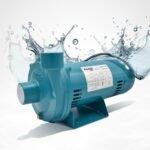In today’s digital-first automotive market, dealerships are facing an entirely new set of challenges and opportunities when it comes to reaching customers. With most car buyers starting their journey online, the ability to capture attention at the right moment is more critical than ever. This is where auto dealer search engine marketing plays a transformative role. By leveraging targeted campaigns through platforms like Google and Bing, dealerships can reach buyers who are actively searching for vehicles, financing, and services. But what strategies deliver the best results, and where do dealerships often stumble? To answer that, we’ll explore real-world case studies that highlight what works and what doesn’t in automotive SEM.
Case Study 1: Success with Localized Keyword Targeting
A mid-sized dealership in Chicago wanted to increase foot traffic and local sales. Instead of targeting broad keywords like “SUVs for sale,” the dealership focused on long-tail, location-specific keywords such as “2025 Toyota Highlander lease Chicago” and “certified pre-owned Ford Escape near me.”
What Worked:
- Hyper-local targeting ensured ads were shown to buyers within a 25-mile radius.
- Long-tail keywords delivered higher-quality leads with stronger intent to purchase.
- The campaign achieved a 30% higher click-through rate (CTR) than their previous generic campaigns.
What Didn’t:
- The dealership initially underestimated negative keywords. Ads occasionally showed up for unrelated searches like “SUV rentals in Chicago,” wasting ad spend. Adding a robust negative keyword list solved the issue.
This case illustrates how precision targeting and careful keyword planning can drive significant ROI.
Case Study 2: The Power of Inventory-Specific Ads
A luxury dealership in Los Angeles wanted to promote its high-end vehicles, specifically the 2025 BMW X5. They ran dynamic inventory ads that showcased real-time pricing, availability, and images of the cars directly in Google Shopping results.
What Worked:
- Inventory-specific ads aligned perfectly with buyer intent, attracting customers actively searching for that exact model.
- Dynamic updates ensured pricing and availability were always accurate, which built trust with potential buyers.
- Conversions improved by 45% compared to standard text-based search ads.
What Didn’t:
- Because luxury models had limited availability, the dealership sometimes ran out of stock. Ads continued running, frustrating customers who clicked only to find the model unavailable. They learned the importance of syncing campaigns with inventory systems to avoid wasted clicks.
This case proves the effectiveness of pairing SEM with inventory management for better alignment with customer expectations.
Case Study 3: Remarketing Campaigns That Closed the Loop
A dealership network in Texas struggled with high bounce rates—shoppers would visit their site, browse vehicles, but leave without taking action. To fix this, they implemented a remarketing strategy targeting those who had previously visited the site with display ads showcasing vehicles they viewed.
What Worked:
- Remarketing reminded buyers of vehicles they had already considered, keeping the dealership top of mind.
- Personalized ads increased the likelihood of return visits and test drive bookings.
- The dealership saw a 35% lift in conversions among returning visitors compared to first-time site visitors.
What Didn’t:
- The dealership initially used generic remarketing ads, which didn’t perform well. Once they personalized ads with specific models, engagement drastically improved.
This case highlights how remarketing can nurture leads and guide them back into the sales funnel, provided ads are tailored to buyer behavior.
Case Study 4: Over-Reliance on Broad Keywords
Not all SEM stories are success stories. A dealership in Florida spent heavily on broad, high-volume keywords such as “cars for sale” and “best trucks.”
What Worked:
- The ads drove a surge in website traffic, boosting brand awareness.
- Some buyers who were at the early research phase were introduced to the dealership.
What Didn’t:
- The majority of clicks came from low-intent users who weren’t ready to buy.
- The cost-per-click (CPC) skyrocketed due to competition for broad keywords.
- Conversions remained flat despite a significant ad spend increase.
The lesson here is clear: more traffic doesn’t always equal more sales. High-intent, specific keywords deliver better ROI than casting too wide a net.
Case Study 5: Integrating SEM with Service Promotions
A dealership in Denver recognized that service and maintenance play a major role in long-term revenue. They launched an SEM campaign focused on keywords like “oil change near Denver” and “affordable tire rotation Denver.”
What Worked:
- The campaign attracted existing car owners who were not in the market for a new vehicle but needed service.
- Service-related ads led to increased customer visits, many of whom later upgraded to new cars.
- The dealership’s overall customer base expanded, building long-term loyalty.
What Didn’t:
- Initially, the dealership neglected to highlight unique value propositions like free shuttle service or discounted packages. When they updated ad copy to emphasize these perks, performance improved significantly.
This case demonstrates the importance of using SEM not only for sales but also for building repeat business through service offerings.
Common Mistakes in Automotive SEM
Beyond individual case studies, several recurring mistakes often undermine SEM campaigns in the automotive sector:
- Ignoring Negative Keywords: Without them, ads appear for irrelevant searches, wasting budget.
- Weak Landing Pages: Even the best ads fail if users land on pages that load slowly or lack relevant content.
- One-Size-Fits-All Messaging: Generic ads rarely perform as well as personalized, vehicle-specific campaigns.
- Lack of Continuous Monitoring: SEM requires constant optimization; “set it and forget it” approaches rarely succeed.
Best Practices That Drive Results
Successful case studies share several key practices:
- Hyper-Targeted Campaigns: Using long-tail and localized keywords ensures better-qualified leads.
- Inventory Integration: Syncing ads with real-time stock prevents buyer frustration.
- Personalization: Customized messaging, especially in remarketing, improves engagement and conversions.
- Data-Driven Optimization: Regularly analyzing performance metrics helps refine campaigns and maximize ROI.
Future Outlook for Automotive SEM
Looking ahead, automotive SEM will only become more sophisticated. AI-driven bidding, predictive analytics, and integration with voice search are already reshaping how campaigns are managed. Dealerships that embrace innovation will stay ahead of competitors, while those relying on outdated approaches may struggle. The rise of electric vehicles, subscription models, and online-only car retailers will also push dealerships to get even smarter with their SEM strategies.
Conclusion
Automotive search engine marketing is no longer optional—it’s essential for dealerships aiming to succeed in an online-driven marketplace. The case studies above reveal that what works in SEM is precision, personalization, and integration with real inventory and customer needs. On the other hand, what doesn’t work is relying on generic keywords, ignoring campaign optimization, or failing to align ads with customer expectations. By learning from both the successes and mistakes of others, dealerships can design smarter campaigns that attract high-intent buyers, improve ROI, and secure long-term growth in an increasingly competitive industry.








